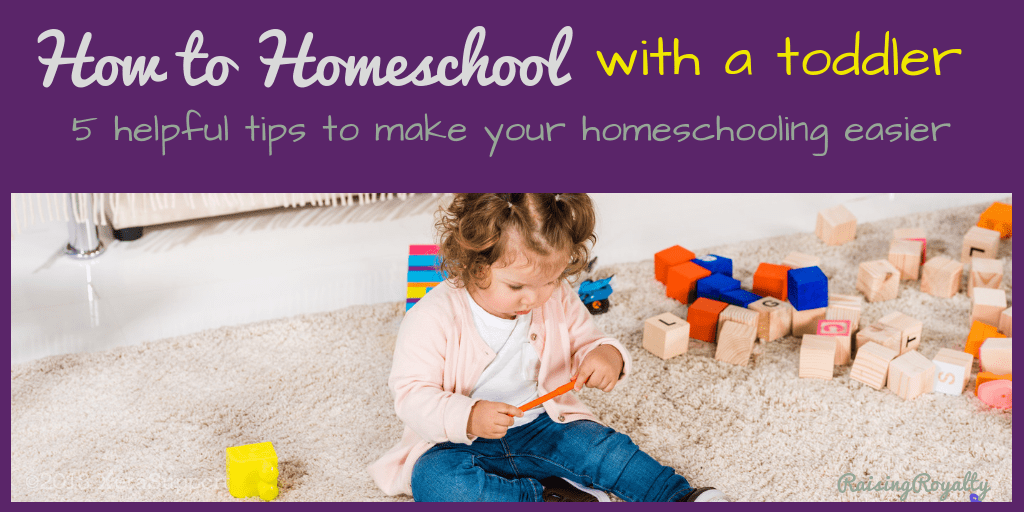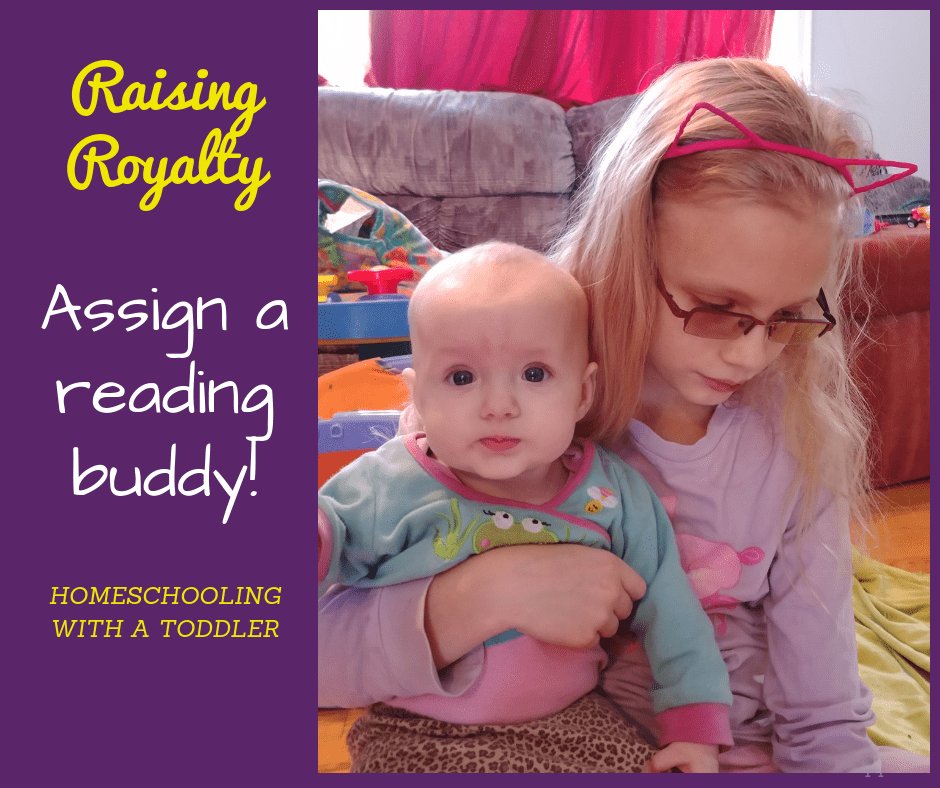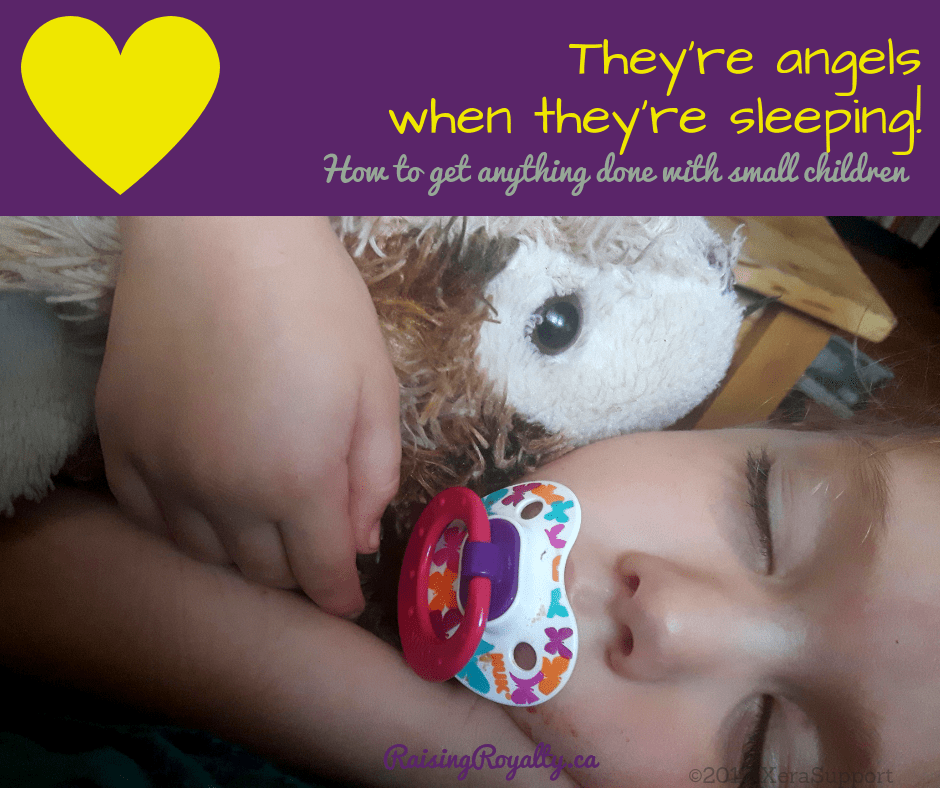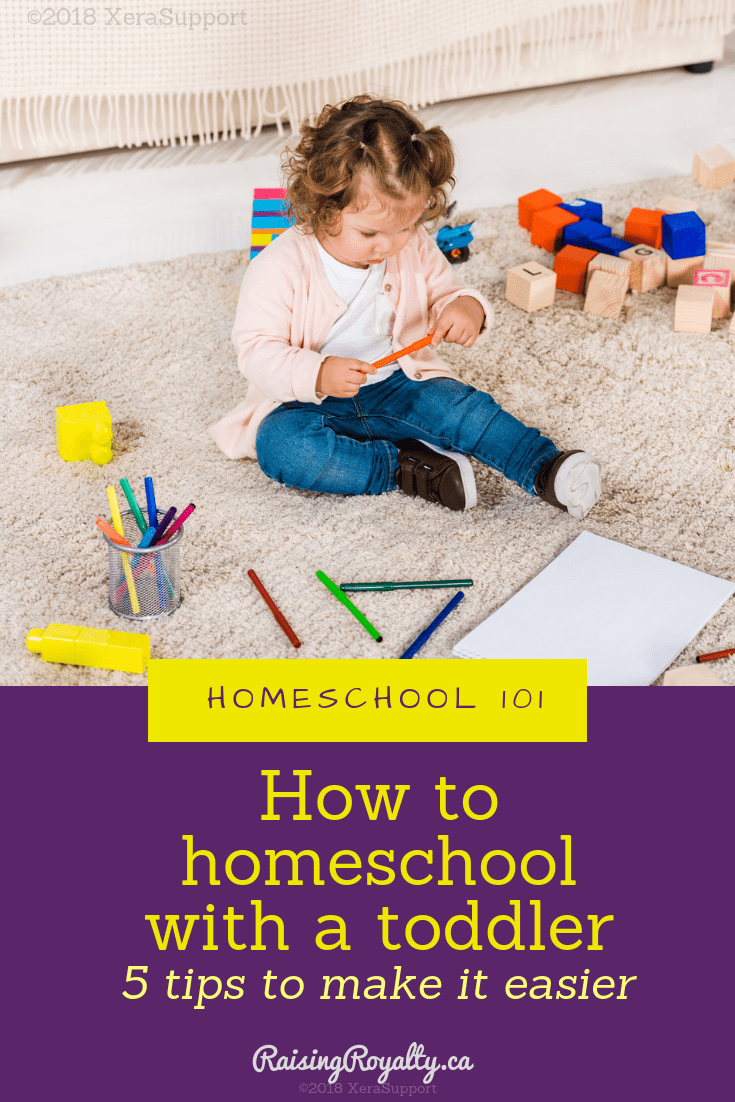
The toddler stage of parenting is tricky at the best of times. When you are homeschooling, toddlers add an extra layer of busy-ness to your day. I’ve homeschooled with toddlers on more than a few occasions, over the last decade. Here’s how to homeschool with a toddler.
1. Organize “tot school”.
Depending on the age of your toddler, this can be a great way to occupy them. Often our toddlers want to be just like their older siblings and do “school” too! Give them their own version of “school” to do while you’re working with the older kids.
Tot school doesn’t have to be anything super detailed or rigorous. (Tho, if you’re interested, check out this series! ) Simply offer crayons or markers and paper to draw on, or a book to “read”, and maybe an activity or two.
Not only does this keep them happy and entertained, you’re teaching valuable skills that will help you in future. By having your toddler “do school” with the rest of your children, you’re modeling how much importance you place on education. And you are developing their capacity to pay attention, to sit, and to focus. You also give them opportunity to develop their fine motor skills, which will help them in future.
For tot school ideas, check out my favorite early childhood education resource: Brightly Beaming.
2. Assign a buddy

Having a toddler around gives your older children plenty of opportunity to learn some life skills. For short periods of time, you can assign one of your older children to be the “buddy” of the toddler. During that 10-30 minute period (depending on the age of the buddy), the older child can play with or read to the toddler.
My older children love playing with their baby sister. Sometimes I’ll put out the cars and car mat, and my toddler and her buddy will happily drive the toy cars and trucks around for a few minutes. Or I’ll tell my older child to practice her reading by reading a short board book to her toddler sister. Not only does my little one get exposure to stories and story reading (and practices sitting still), my older one practices her reading skills!
3. Contain them.
Sometimes you just need to corral and contain your toddler. I’ll use a playpen occasionally to keep my toddler in one spot, and where I can keep her next to me without having to hold her. And I’ll use a baby gate to give her a safe space to explore. Often she’ll end up underneath our table where we’re working, happily playing with her toys.
Some people will “blanket-train” their kids, where they teach their little ones to stay on a blanket for a little bit. This is an excellent tool to teach boundaries, though it requires patience and frequent reminders (something I don’t have time for right now). Others might use a stroller inside, for a brief period, so they don’t have to chase the little one while trying to focus on an older child’s needs.
Containment strategies shouldn’t be used for the whole time, but can be another tool to occupy them and keep a little one safe.
4. Use “Busy Bags”.
Busy bags aka activity boxes aka quiet time games are these self-contained packages of special activities and toys that a parent will put together, for such times as this. When you need to occupy a toddler for a brief period of time, you pull out a busy bag.
Busy bags are filled with activities that are special and designed to be done independently, with minimal instruction. They are also things that will occupy a child for at least 10 minutes, if not longer. They can be kits that you purchase, or sets that you put together yourself.
For example, in my toddler busy bags, I keep a board puzzle, a magnet set, a shape sorter, and a rattle drum. As she gets older, I’ll add a bead lacing set, smaller sorting games, a clothespin matching game, and some play food sets. For my older children, I keep activity books and special markers, fidget toys, brain teaser puzzles and a set of finger puppets.
The trick to busy bags is to use them sparingly, and to switch them out frequently! It’s the novelty of the activity that helps keep their attention, so making sure they don’t play with them often and that you continually stock with new toys or games helps.
5. Take advantage of nap time!

Sometimes with a toddler, the only thing you can do is match their schedule. So you may need to leave some of the homeschooling activities for nap time. We’ll often leave science experiments or some of the trickier art projects for during that time when my little one is sleeping.
Nap time can be ideal for those homeschooling activities that require focus and concentration. Fortunately, one of the best things about homeschooling is its flexibility! No one says you have to follow a public-school-type schedule! You can spend all morning playing with your toddler and doing group activities, then during her nap time, work on those more difficult tasks.
You can even do homeschooling after your little one’s bedtime or in the evenings when you might have a partner to keep track of your toddler. It’s all in what works best for your family.
Figure out how to homeschool with a toddler?
Every child is different, so use all the strategies you can. You can combine them too. I find busy bags and playpens, high chairs or strollers to be an invaluable way to help keep my baby out of the older kids’ school. We also use tot school activities to include her, so that she won’t get into everyone else’s things.
What’s your favorite way to homeschool with a toddler?
[convertkit form=5123319]

